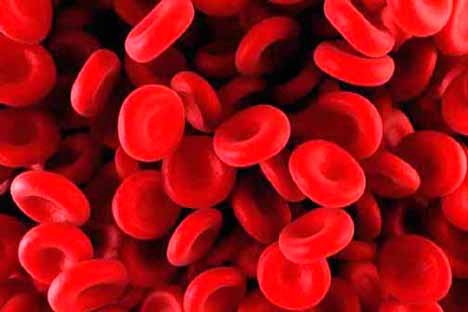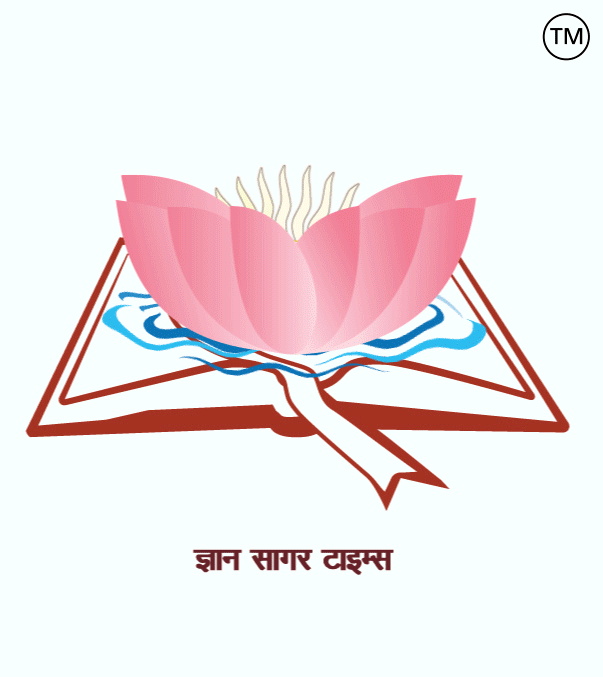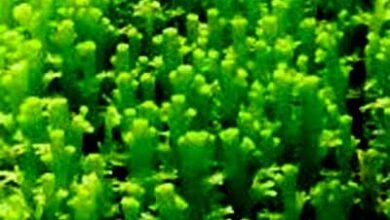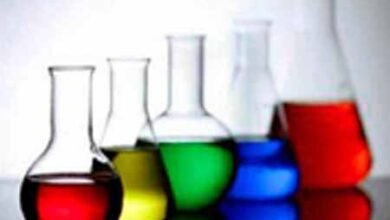
Related to Biology-147.
|
1. The number of bones in the human body is 206 and the number of ribs is 24. 2. 29 bones (8 cranial bones and 14 facial bones). 3. The smallest bone of the body is the stapes bone (ear bone). 4. The largest bone of the body is the femur (thigh bone). 5. The strongest bone in the body is the Femur bone. 6. In humans, 12 pairs of cranial nerves and 31 pairs of spinal nerves are found. 7. The number of salivary glands in humans is three pairs. 8. Changes in the urea of ammonia occur in the liver. 9. The liver plays an important role in urea formation. The liver is an excretory organ. 10. Mumps disease occurs in humans due to parotid gland infection (painful swelling). 11. Gastric juice comes out of the stomach. 12. Foul odour in stool is caused by a chemical called indole and scatole. 13. Insulin is produced in the human pancreas. 14. The largest digestive gland in the body is the liver. 15. Digestive food is converted into faeces in the Large intestine. 16. An inorganic substance that helps to keep bones and teeth healthy is Calcium (Calcium phosphate). 17. The colour of urine is yellow due to the Eurochrome. 18. The thyroid gland is found in the neck. 19. The weight of water in the body is 65 – 80%. 20. Maltase enzyme converts the maltose sugars into glucose. 21. Carbohydrate provides energy to the body. 22. One gram of the fat produces 9.3 kcal of energy. 23. The body takes about 23 seconds to circulate in the body. 24. Control of all mental functions is in the cerebrum (front part of the brain). 25. Control of normal voluntary actions such as walking, and speaking is in the cerebellum (the back of the brain). 26. The cerebrum is the largest part of the human brain. 27. Blood is a specialized connective tissue. 28. The function of blood is to transport oxygen from the lungs to all parts of the body and to bring carbon dioxide from parts of the body to the lungs. 29. Blood is an alkaline solution, its pH value is 7.4. 30. The amount of blood in the human body is about 7 to 8% of the body weight. 31. Women have half a litre less blood than men. 32. Conduction of digested food and hormones in the body is done through plasma. 33. The life span of a red blood particle (RBC) is 100 to 120 days. It contains haemoglobin due to which the colour of blood is red. 34. Hematin is an iron compound found in haemoglobin. 35. The main function of RBC is to transport oxygen to every cell of the body and bring out carbon dioxide. 36. When there is less amount of haemoglobin, there is a disease called blood deficiency (anaemia). 37. Blood acts to control body temperature and protect the body from diseases. 38. Blood platelets corpuscles protect the blood flow by forming a blood clot on the spot or wound. 39. White blood cells eat harmful bacteria and viruses. 40. The essential protein for the formation of blood clots is fibrinogen. 41. Blood maintains a water balance in the body. 42. The main cause of differentiation of human blood is the glycoprotein found in red blood particles (RBC), which is called an antigen. 43. Blood group O is called the universal blood donor blood group. 44. In which there is no antigen from both (A and B), it is called blood group O. 45. Blood group A B is called the universal acceptor blood group because there are no antibodies in it. 46. Insulin regulates the formation of glycogen from glucose. 47. The blood vessel carrying blood from the body to the heart is called a ‘vein’. 48. Increasing the amount of glucose in the blood is called diabetes. 49. Diabetes occurs due to the under-secretion of insulin. 50. Vein contains impure blood ie blood containing carbon dioxide. An exception to this is the Pulmonary vein. 51. The pulmonary vein carries blood from the lungs to the left atrium, which contains pure blood. 52. The blood vessel carrying blood from the heart to the body is called an artery, pure blood in the artery means oxygen-rich blood. An exception to this is the pulmonary artery, the pulmonary artery carries blood from the right ventricle to the lungs, which contains impure blood. 53. There is impure blood in the right part of the heart and pure blood in the left part. 54. The impure blood from the body goes from the right atrium to the right ventricle again into the lungs. 55. Pureblood enters the body from the left lung and left atrium from the left atrium. 56. Carbon dioxide present in the blood increases the heart rate by decreasing the pH of the blood, that is, acidification increases the heart rate and alkalinity decreases the heart rate. 57. In the normal state, the heart of the human heart beats 72 times in a minute (150 times in the fetal state) and about 70 milliliters in one heartbeat Pumps blood. 58. The vessel that carries blood to the heart muscle is called the coronary artery. In this, a heart attack occurs due to any type of obstruction. Dr. (Prof.) Amarendra Kumar ========== ========= =========== जीव विज्ञान से संबंधित-147.
1. मनुष्य के शरीर मे हड्डियों की संख्या 206 तथा पसलियों की संख्या 24 होती है. 2. मनुष्य की खोपडी में 29 हड्डियां (8 क्रेनियल हड्डियां और 14 फेशियल हड्डियां) होती है. 3. शरीर के सबसे छोटी हड्डी स्टेप्स (कान की हड्डी) होती है. 4. शरीर की सबसे बड़ी हड्डी फीमर (जांघ की हड्डी) होती है. 5. शरीर की सबसे मजबूत हड्डी फीमर (जांघ की हड्डी) होती है. 6. मनुष्य मे 12 जोड़ी कपाल तंत्रिकाएं और 31 जोड़ी मेरूरज्जु तंत्रिकाएं पायी जाती हैं. 7. मनुष्य मे लार ग्रंथियों की संख्या तीन जोड़ी होती है. 8. अमोनिया का यूरिया मे परिवर्तन यकृत मे होता है. 9. यकृत यूरिया निर्माण मे महत्वपूर्ण भूमिका निभाता है | यकृत एक उत्सर्जी अंग है. 10. पैरोटिड ग्रंथि में संक्रमण होने (फूलने) से मनुष्य में गलसुआ रोग हो जाता है. 11. जठर रस आमाशय से निकलता है. 12. मल मे बदबू इंडोल तथा स्कैटोल नामक रसायन के कारण होती है. 13. मनुष्य के अग्नयाशय मे इंसुलिन का निर्माण होता है. 14. शरीर की सबसे बड़ी पाचक ग्रंथि यकृत है. 15. वृहद आंत्र मे अपचा भोजन मल के रूप मे बदलता है. 16. हड्डियों एवं दातों को स्वस्थ रखने में सहायक अकार्बनिक पदार्थ कैल्शियम (कैल्शियम फॉस्फेट) होता है. 17. मूत्र का रंग पीला यूरोक्रोम के कारण होता है. 18. थाइराइड ग्रंथि गले में पायी जाती है. 19. शरीर मे जल का भार 65 – 80% होता है. 20. माल्टएज (माल्टेज) एंजाइम शर्करा को ग्लूकोज में बदलता है. 21. कार्बोहाइड्रेट शरीर को ऊर्जा प्रदान करती है. 22. एक ग्राम बसा से 9.3 किलो कैलोरी ऊर्जा उत्पन्न होती है. 23. शरीर मे रक्त परिभ्रमण मे 23 सेकेण्ड का समय लगता है. 24. सभी मानसिक क्रियाओं का नियंत्रण प्रमस्तिष्क (मस्तिष्क के अगले भाग) में होता है. 25. सामान्य ऐच्छिक क्रियाओं जैसे- चलना-फिरना, बोलना का नियंत्रण अनुमस्तिष्क (मस्तिष्क के पिछले भाग) मे होता है . 26. मनुष्य के मस्तिष्क का सबसे बड़ा भाग प्रमस्तिष्क होता है. 27. रक्त एक विशेष संयोजी ऊतक है. 28. रूधिर का कार्य आक्सीजन को फेफड़ों से शरीर के सभी भागों में पहुंचाना तथा कार्बन डाई आक्साइड को शरीर के भागों से फेफड़े तक लाना है. 29. रक्त एक क्षारीय विलयन है, इसका PH मान 7.4 होता है. 30. मानव शरीर में रक्त की मात्रा शरीर के भार का लगभग 7 से 8% तक होती है. 31. महिलाओं मे पुरुषों की तुलना मे आधा लीटर कम रक्त होता है. 32. पचे हुए भोजन एवं हार्मोन का शरीर में संवहन प्लाज्मा के द्वारा होता है. 33. लाल रक्त कण (RBC) का जीवन काल 100 से 120 दिन का होता है. इसमें हीमोग्लोबिन होता है जिसके कारण रक्त का रंग लाल होता है. 34. हीमोग्लोबिन मे पाया जाने वाला लौह यौगिक हीमैटिन है. 35. RBC का मुख्य कार्य शरीर की हर कोशिका मे आक्सीजन पहुंचाना तथा कार्बन डाई आक्साइड बाहर लाना है. 36. हीमोग्लोबिन की मात्रा कम होने पर रक्त क्षीणता (एनीमिया) नामक रोग हो जाता है. 37. रक्त शरीर के ताप का नियंत्रण तथा शरीर को रोगों से रक्षा करने का कार्य करता है. 38. रूधिर की प्लेट्लेट्स कणिकाएं स्थान या घाव पर रूधिर का थक्का बनाकर उसकी रक्षा करती हैं. 39. श्वेत रूधिर कणिकाएं हानिकारक जीवाणुओं एवं विषाणुओं का भक्षण करती हैं. 40. रक्त का थक्का बनने के लिए अनिवार्य प्रोटीन फाइब्रिनोजन है . 41. रूधिर शरीर मे जल संतुलन को बनाये रखता है. 42. मनुष्य के रक्तों की भिन्नता का मुख्य कारण लाल रक्त कण (RBC) मे पायी जाने वाली ग्लाइको प्रोटीन है, जिसे एण्टीजन कहते हैं. 43. रक्त समूह O को सर्वदाता रक्त समूह कहते हैं. 44. जिसमे दोनों (A तथा B) मे से कोई एन्टीजन नहीं होता है, वह रूधिर वर्ग O कहलाता है. 45. रक्त वर्ग A B को सर्वग्रहता रक्त समूह कहते हैं, क्योंकि इसमे कोई एण्टीबाडी नही होता है . 46. इंसुलिन ग्लुकोज से ग्लाइकोजिन बनाने की क्रिया को नियंत्रित करता है. 47. शरीर से हृदय की ओर रक्त ले जाने वाली रक्त वाहिनी को ‘शिरा’ कहते हैं. 48. रूधिर मे ग्लूकोज की मात्रा बढ़ना मधुमेह कहलाता हैं. 49. इंसुलिन के अल्प स्रवण से मधुमेह नामक रोग होता है. 50. शिरा मे अशुद्ध रक्त अर्थात कार्बन डाई आक्साइड युक्त रक्त होता है. इसका अपवाद पल्मोरीन शिरा है. 51. पल्मोरीन शिरा फेफडे से बायें अलिंद मे रक्त को ले जाती है , इसमे शुद्ध रक्त होता हैं. 52. हृदय से शरीर की ओर रक्त ले जाने वाली रक्त वाहिनी को धमनी कहते हैं, धमनी मे शुद्ध रक्त अर्थात आक्सीजन युक्त रक्त होता है. इसका अपवाद पल्मोनरी धमनी है, पल्मोनरी धमनी दाहिने निलय से फेफड़े मे रक्त पहुंचाती है , इसमे अशुद्ध रक्त होता है. 53. हृदय के दायें भाग मे अशुद्ध रक्त तथा बायें भाग मे शुद्ध रक्त होता है. 54. शरीर से अशुद्ध रक्त दायां अलिंद से दायां निलय फिर फेफडे मे जाता है. 55. शुद्ध रक्त फेफडे से बायां अलिंद,बायां अलिंद से बायां निलय फिर शरीर मे प्रवेश करता है. 56. रूधिर मे उपस्थित कार्बन डाई आक्साइड रूधिर के PH को कम करके हृदय की गति को बढाता है, अर्थात अम्लीयता हृदय की गति को बढाती है तथा क्षारीयता हृदय की गति को कम करती है. 57. सामान्य अवस्था मे मनुष्य का हृदय एक मिनट मे 72 बार (भ्रूण अवस्था मे 150 बार) धड़कता है तथा एक धड़कन मे लगभग 70 मि.ली. रक्त पम्प करता है. 58. हृदय की मांसपेशियों को रक्त पहुंचाने वाली वाहिनी को कोरोनरी धमनी कहते हैं. इसी मे किसी प्रकार की रूकावट होने पर हृदयाघात होता है. डॉ, (प्रो.) अमरेंद्र कुमार
|






